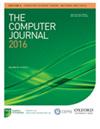Android Malware Detection in Bytecode Level Using TF-IDF and XGBoost
IF 1.5
4区 计算机科学
Q4 COMPUTER SCIENCE, HARDWARE & ARCHITECTURE
引用次数: 0
Abstract
Abstract Android is the dominant operating system in the smartphone market and there exists millions of applications in various application stores. The increase in the number of applications has necessitated the detection of malicious applications in a short time. As opposed to dynamic analysis, it is possible to obtain results in a shorter time in static analysis as there is no need to run the applications. However, obtaining various information from application packages using reverse engineering techniques still requires a substantial amount of processing power. Although some attempts have been made to solve this problem by analyzing binary files without decoding the source code, there is still more work to be done in this area. In this study, we analyzed the applications in bytecode level without decoding the binary source files. We proposed a model using Term Frequency - Inverse Document Frequency (TF-IDF) word representation for feature extraction and Extreme Gradient Boosting (XGBoost) method for classification. The experimental results show that our model classifies a given application package as a malware or benign in 2.75 s with 99.05% F1-score on a balanced dataset, and in 3.30 s with 99.35% F1-score on an imbalanced dataset containing obfuscated malwares.利用TF-IDF和XGBoost在字节码级别检测Android恶意软件
Android是智能手机市场的主导操作系统,在各种应用商店中存在着数以百万计的应用。随着应用程序数量的增加,需要在短时间内检测出恶意应用程序。与动态分析相反,静态分析可以在更短的时间内获得结果,因为不需要运行应用程序。然而,使用逆向工程技术从应用程序包中获取各种信息仍然需要大量的处理能力。虽然已经有一些尝试通过分析二进制文件而不解码源代码来解决这个问题,但是在这个领域还有更多的工作要做。在本研究中,我们在不解码二进制源文件的情况下,分析了字节码级别的应用程序。我们提出了一个使用词频-逆文档频率(TF-IDF)词表示进行特征提取和使用极限梯度增强(XGBoost)方法进行分类的模型。实验结果表明,我们的模型在2.75秒内以99.05%的f1得分将给定的应用程序包分类为恶意软件或良性,在3.30秒内以99.35%的f1得分对包含混淆恶意软件的不平衡数据集进行分类。
本文章由计算机程序翻译,如有差异,请以英文原文为准。
求助全文
约1分钟内获得全文
求助全文
来源期刊

Computer Journal
工程技术-计算机:软件工程
CiteScore
3.60
自引率
7.10%
发文量
164
审稿时长
4.8 months
期刊介绍:
The Computer Journal is one of the longest-established journals serving all branches of the academic computer science community. It is currently published in four sections.
 求助内容:
求助内容: 应助结果提醒方式:
应助结果提醒方式:


